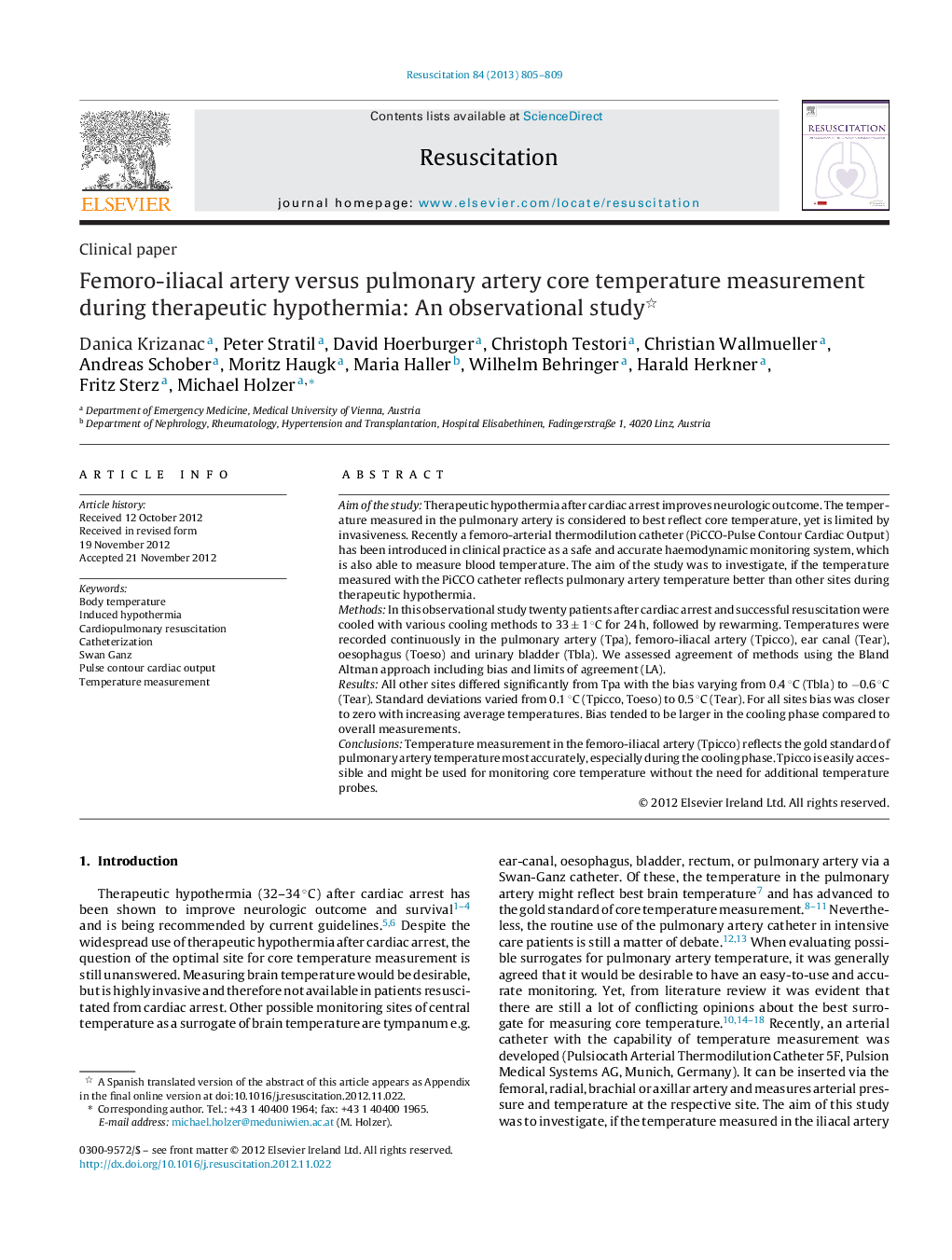| Article ID | Journal | Published Year | Pages | File Type |
|---|---|---|---|---|
| 3008741 | Resuscitation | 2013 | 5 Pages |
Aim of the studyTherapeutic hypothermia after cardiac arrest improves neurologic outcome. The temperature measured in the pulmonary artery is considered to best reflect core temperature, yet is limited by invasiveness. Recently a femoro-arterial thermodilution catheter (PiCCO-Pulse Contour Cardiac Output) has been introduced in clinical practice as a safe and accurate haemodynamic monitoring system, which is also able to measure blood temperature. The aim of the study was to investigate, if the temperature measured with the PiCCO catheter reflects pulmonary artery temperature better than other sites during therapeutic hypothermia.MethodsIn this observational study twenty patients after cardiac arrest and successful resuscitation were cooled with various cooling methods to 33 ± 1 °C for 24 h, followed by rewarming. Temperatures were recorded continuously in the pulmonary artery (Tpa), femoro-iliacal artery (Tpicco), ear canal (Tear), oesophagus (Toeso) and urinary bladder (Tbla). We assessed agreement of methods using the Bland Altman approach including bias and limits of agreement (LA).ResultsAll other sites differed significantly from Tpa with the bias varying from 0.4 °C (Tbla) to −0.6 °C (Tear). Standard deviations varied from 0.1 °C (Tpicco, Toeso) to 0.5 °C (Tear). For all sites bias was closer to zero with increasing average temperatures. Bias tended to be larger in the cooling phase compared to overall measurements.ConclusionsTemperature measurement in the femoro-iliacal artery (Tpicco) reflects the gold standard of pulmonary artery temperature most accurately, especially during the cooling phase. Tpicco is easily accessible and might be used for monitoring core temperature without the need for additional temperature probes.
